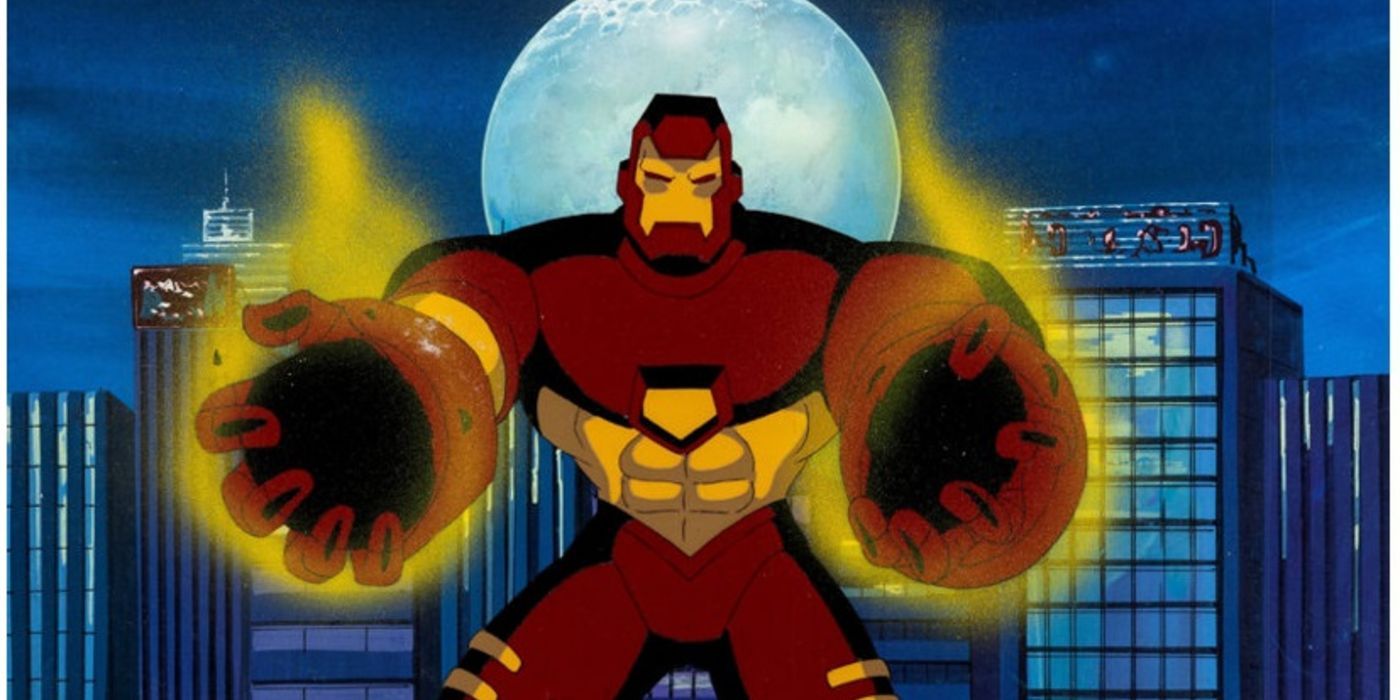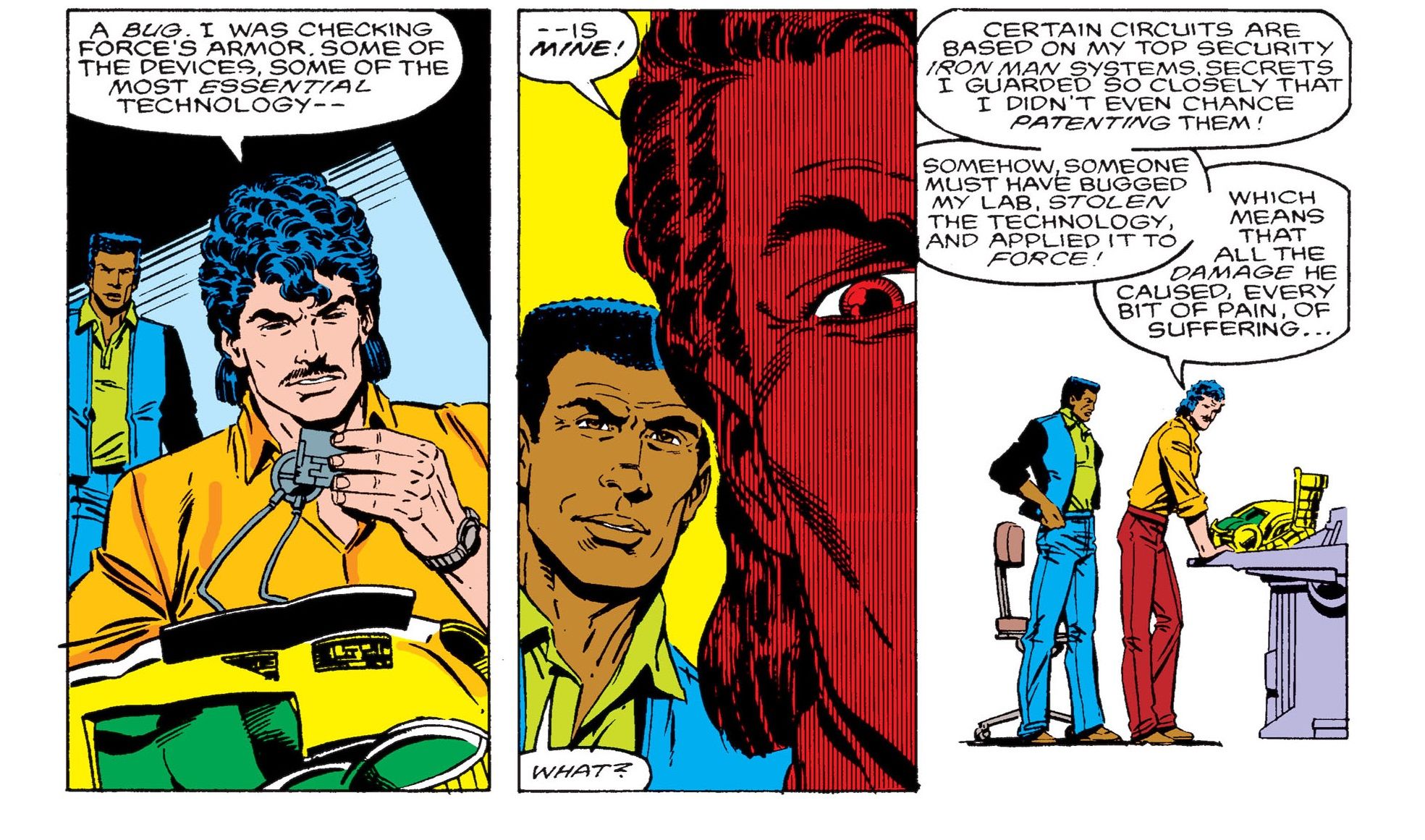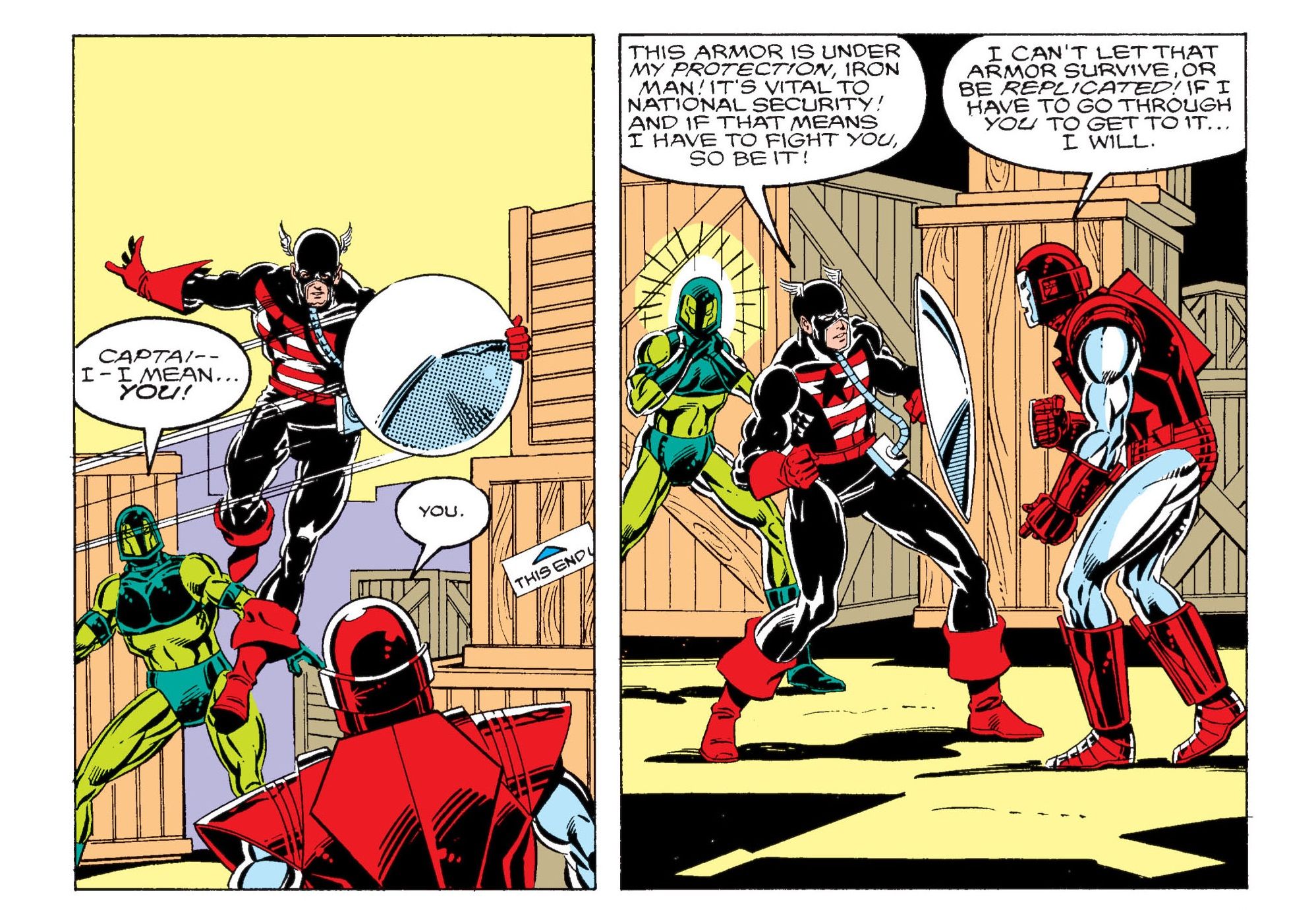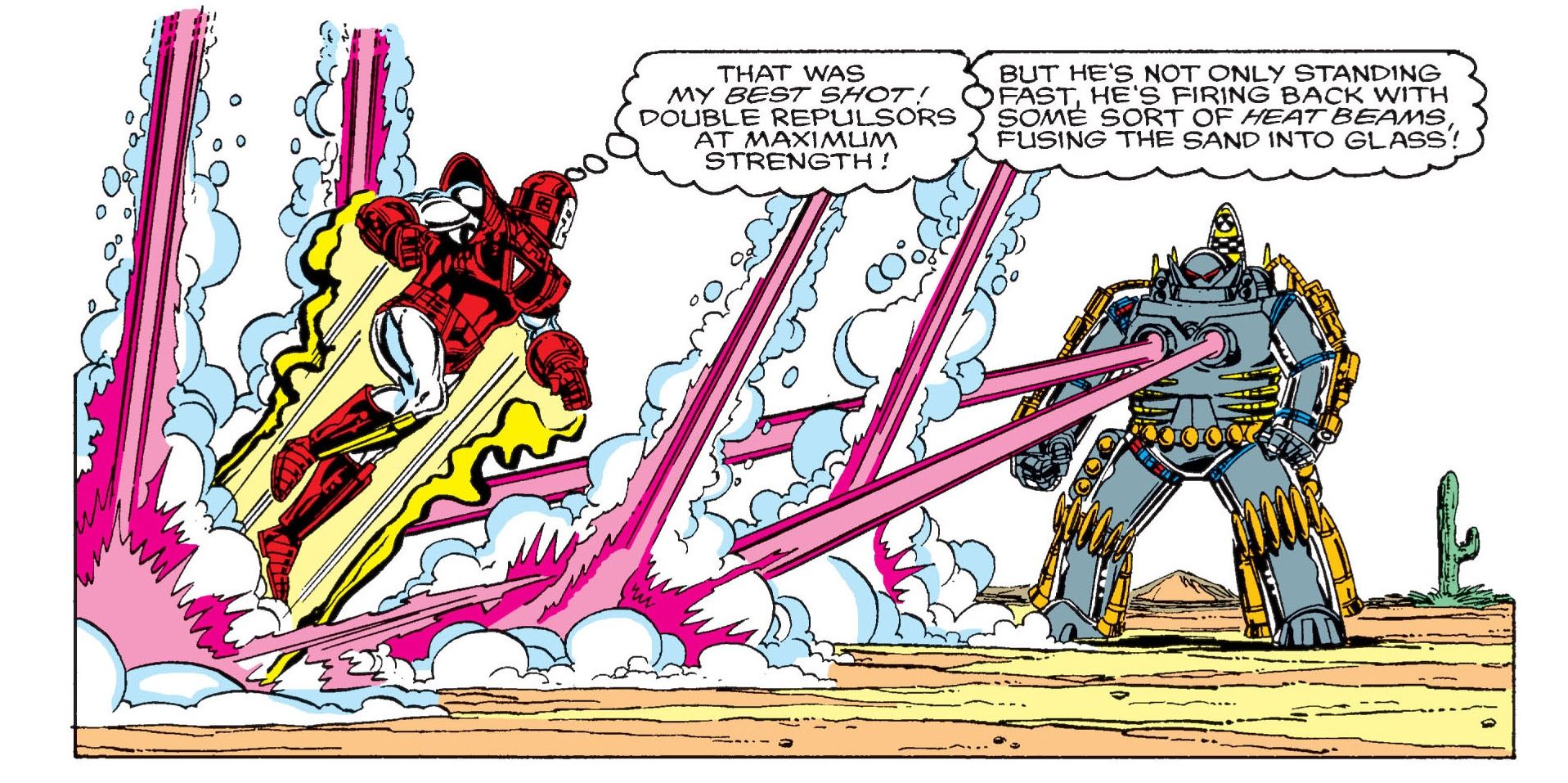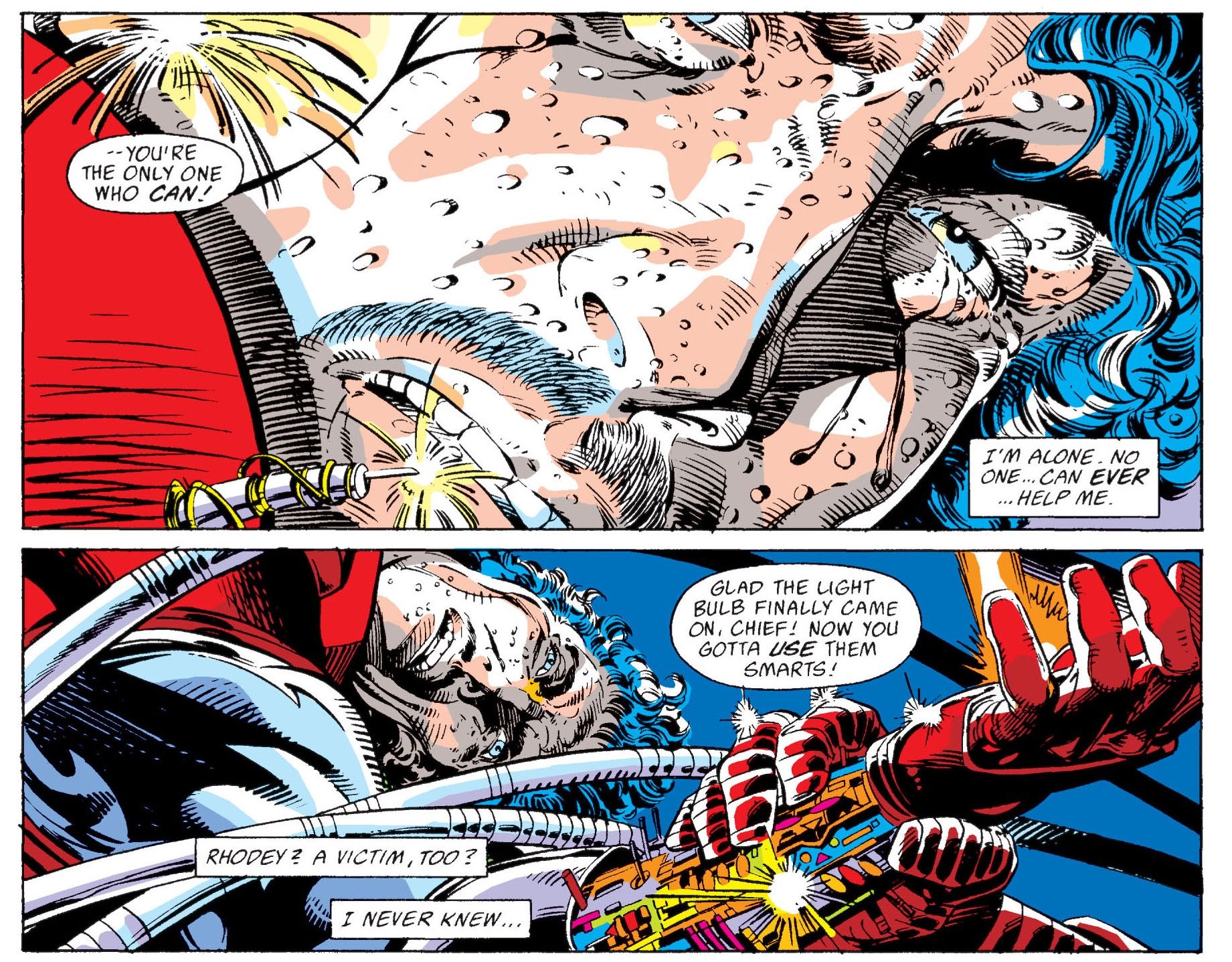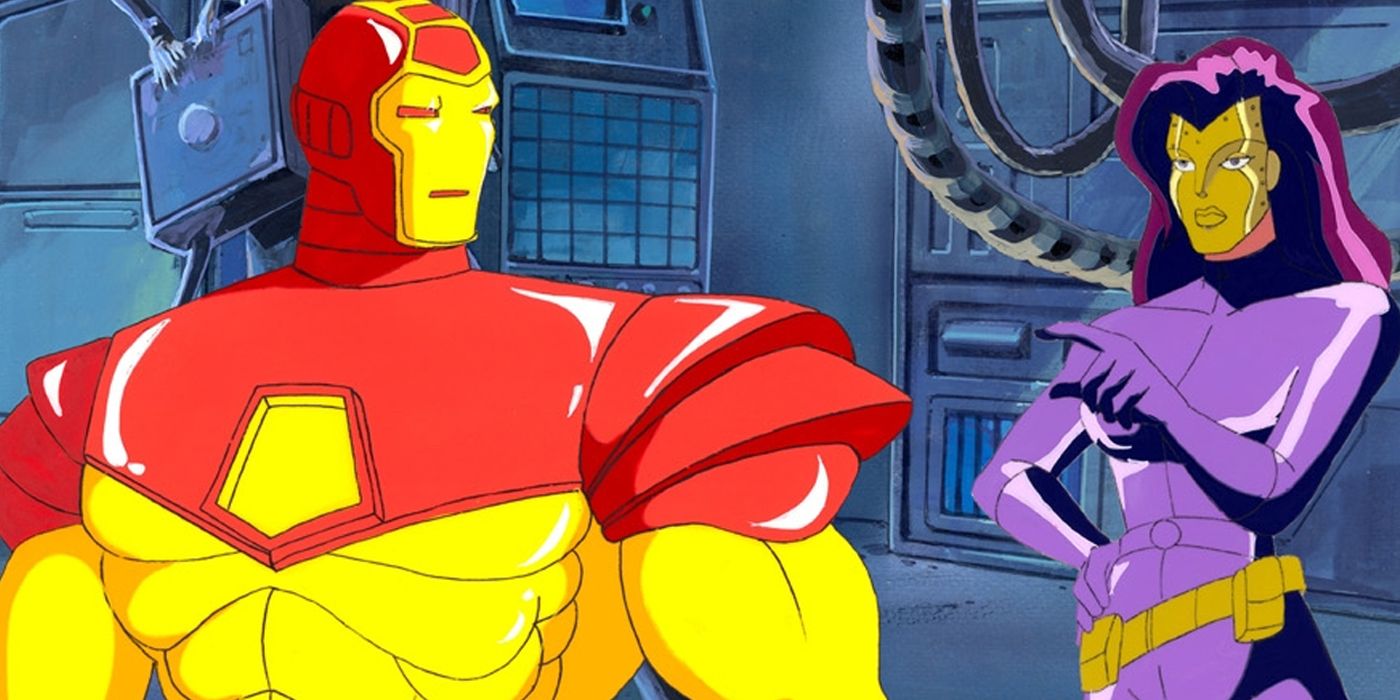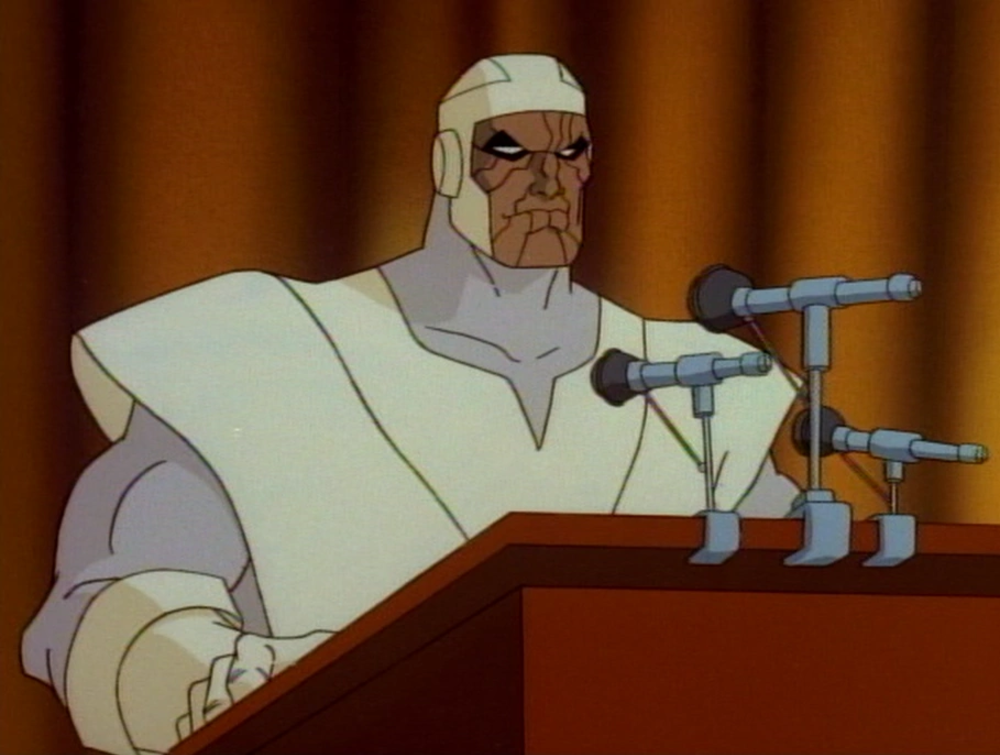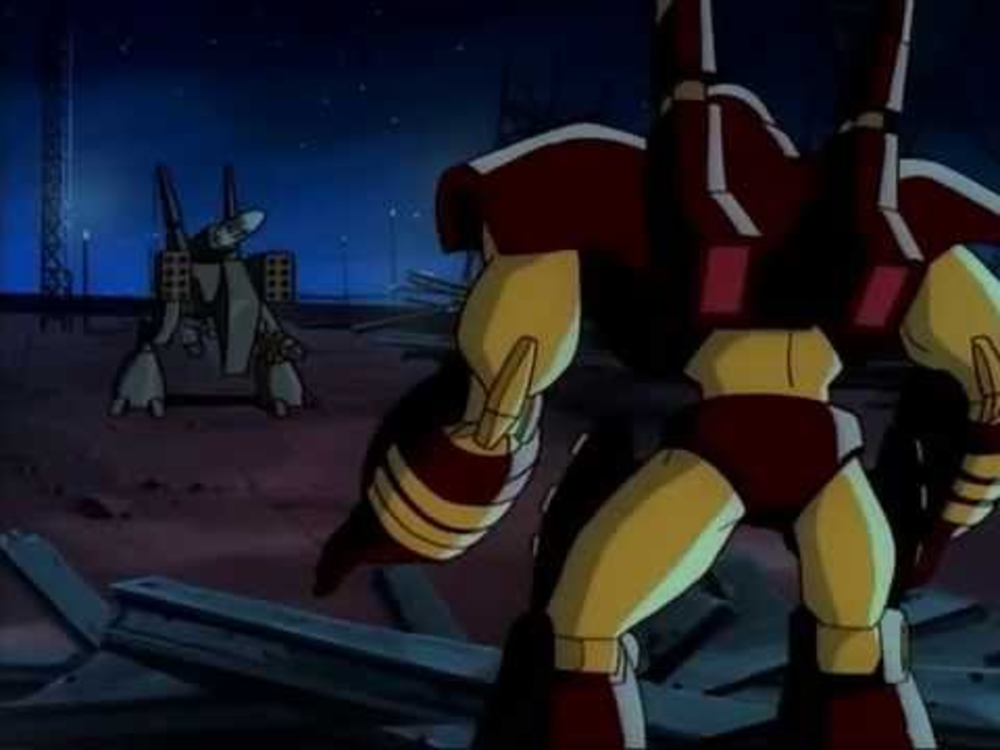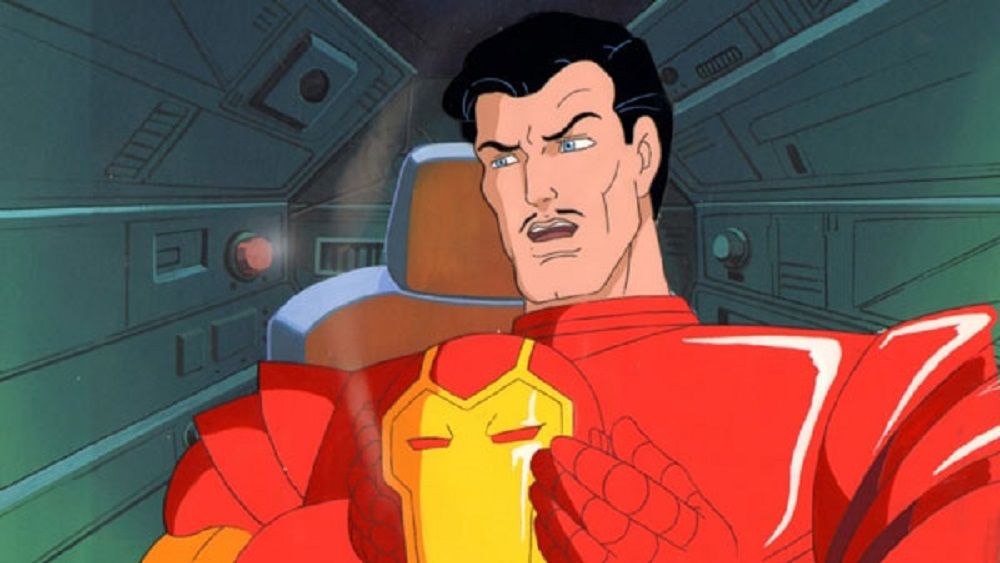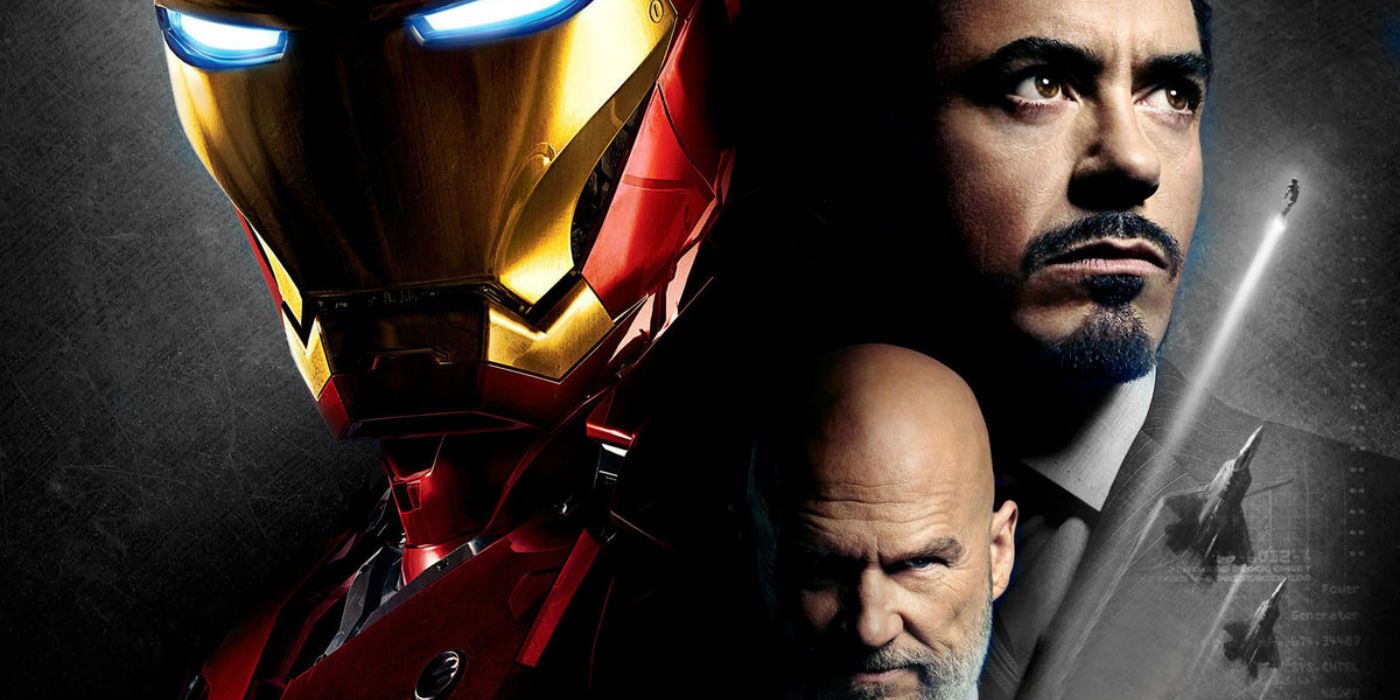Welcome to Adventure(s) Time's 107th installment, a look at animated heroes of the past. This week, a 1980s Iron Man story arc that's found itself reinterpreted repeatedly, and adapted to both television and the big screen (kicking off the Marvel Cinematic Universe, no less). And if you have any suggestions for the future, let me hear them. Just contact me on Twitter.
While "Armor Wars" has become the popular name for the 1987-1988 Iron Man story arc, and was later used for the trade paperback collection, it was originally billed as "Stark Wars." "Armor Wars" is a catchier title, though, and the tagline used in the full-page ads that ran in other Marvel titles in 1987.
The storyline ran through from Iron Man #225 to #231, plotted by David Michelinie and Bob Layton, with art by Mark Bright and finishes by Layton. The premise is a basic one: Iron Man discovers his technology has been stolen by an adversary and disseminated worldwide. His response is to travel the globe and dismantle the tech ... at any cost. It's the second "definitive" Iron Man story from the Michelinie/Layton team. The first occurred during their initial Iron Man stint in 1980, when "Demon in a Bottle" introduced Tony Stark's struggle with alcoholism.
The introductory "Stark Wars" chapter depicts Iron Man examining the armor of Force, a reformed villain and flunkie of industrialist Justin Hammer. Upon discovering the armor is based on his designs, Iron Man compiles a list of other villains using his technology, including Beetle, Shockwave, Stilt-Man, the Crimson Dynamo, Controller, Titanium Man, the Raiders, and others. The multi-part story will consist of Iron Man taking out a few of the baddies each issue. Sounds fun.
The first complication occurs when the media casts skepticism over Iron Man's crusade. This is a bit of stretch -- it's not as if Iron Man's actions at this point are particularly egregious. But this is establishing Stark's mindset, emphasizing he's willing to cross lines he hasn't in the past (overwhelmed with anxiety over what villains can accomplish with this tech). Beginning in the second issue, we have Stark targeting Stingray, an Avengers ally and government employee, on the basis his tech might be stolen.
Stark is wrong, though. And now has Nick Fury and S.H.I.E.L.D. looking to shut down Iron Man. Stark attempts to mitigate the damage by publicly firing Iron Man, presenting him as a rogue agent. The rest of the arc has Stark growing more desperate, constantly attempting to outwit Fury, being kicked out of the West Coast Avengers, and even running afoul of Steve Rogers while infiltrating the Vault.
Rogers has his own issues with the government at this point, having lost his role of Captain America and taking on the identity of "The Captain." (All of this ties in with Mark Gruenwald's famous "Captain America No More!" arc, and it's pretty amazing in retrospect to think this was being published simultaneously with "Armor Wars". '80s Marvel was no joke.)
The final chapters have one of Stark's corporate nemeses, Edwin Cord, working with the government to create Firepower, a sophisticated armor system that can finally eliminate Iron Man. Though after Iron Man is defeated (even forced to fake his death to escape the fight), Cord refuses to hand the armor over to the government. Instead, Cord sends Firepower on a mission to destroy several Stark operations.
So, even though Stark has convinced himself he should retire as Iron Man, he's forced to resume the role. And to do it in a brand-new armor. (Returning to his classic red and gold color scheme.) Firepower is defeated, and Stark must figure a way to go forward, having caused so damage in his quest.
Following this is the epilogue chapter, Issue 232's "Intimate Enemies." This is possibly the finest Iron Man comic ever, featuring Barry Windsor-Smith as co-plotter and artist, with Michelinie scripting and Layton inking.
It's a dark, psychological tale of Stark fighting out of his own private hell. A tonal shift from the previous issues, which maintained a light tone that didn't quite match the gravity of the story arc.
Now, shift ahead to 1995. Iron Man is not a major Marvel property, but there's an attempt to sell a cartoon and toy line. Iron Man was paired with the Fantastic Four the year earlier for the syndicated Marvel Action Hour. The series is mostly remembered for a deeply-hated run of Fantastic Four episodes. (Disney+ is streaming the series, if you're curious about these oddities.)
Iron Man's first season has been largely forgotten, but it did feature solid character designs reminiscent of '80s Marvel Productions cartoons such as G. I. Joe. The stories, however, were often silly, taking little inspiration from the comics.
In the second season, Marvel Action Hour returned as Marvel Action Universe, and both series underwent reboots. Perhaps taking inspiration from X-Men's success with direct adaptations, Iron Man's new episodes also went straight to the comics. A two-part episode entitled "The Armor Wars," from writer Len Uhley, brought the story to television.
The opening here isn't quite the same. Iron Man discovers his technology has been stolen after a run-in with the Crimson Dynamo (during which he accidentally triggered a nuclear explosion.) The United Nations condemns Iron Man for the event, motivating Stark to seek out others using his designs. It's a decent rethink of the premise -- opening with a tragedy that pushes Stark to go to extremes he might've otherwise avoided.
Many of the beats after this follow the comics, with Stark traveling the world and using Negator Packs to short out any armor using his tech. Several of the villains he faces are taken directly from the comic, sometimes in the midst of the same schemes, such as the Controller and his brainwashing spa for overworked executives.
The Beetle's confrontation is also reminiscent of the original scene...although it's unlikely Michelinie and Layton envisioned Beetle speaking like one of the Beatles. Iron Man even quips the villain is having a "hard day's night" after defeating him.
Alterations from the comic storyline include replacing Steve Rogers with Hawkeye during the Vault fight scene, which makes a certain amount of sense. Captain America had yet to appear in the '90s Marvel animated universe, while Hawkeye was a supporting player during Iron Man's first season.
There's also a fight between Iron Man and War Machine that couldn't have happened in the comics -- given that War Machine didn't exist yet, and Michelinie has indicated he never really agreed with Rhodey wearing the armor anyway.
The finale streamlines the story, ignoring Edwin Cord and making Justin Hammer the business rival behind Firepower. The bit about Iron Man faking his death during the Firepower fight, then returning with new armor does remain. And, boy, does this armor scream "1995!"
Stark has a more conclusive victory here, strolling into Hammer's office and slipping a floppy disk into his computer that erases all data in his firm's databanks, not just the info stolen from Stark. There are numerous scenes of Stark's friends calling him out on his behavior, and clearly he's meant to be morally ambiguous here...but it remains a surprisingly mean-spirited ending.
DESIGN-Y
The revamped look for Iron Man's second season was an attempt to capture the more "extreme" nature of '90s comics. No one could ever truly pull this off in animation, due to the complications of translating all of those rendering lines, so it does look a bit off. The actual design for Iron Man, especially his helmet, is an improvement over the first season. But Season Two Tony Stark, with that blue mullet, is a downgrade from his suave look from the first year (when he had actual black hair.)
"UM, ACTUALLY..."
The Guardsmen at the Vault (the green guys) are incorrectly identified as Mandroids (the big gold guys) in the animated adaptation.
HEY, I KNOW THAT VOICE
Robert Hays, best known for playing Ted Striker in Airplane!, voices Tony Stark. He'd also pop up in the role when Iron Man guest-starred in other '90s cartoons. And acclaimed actor, and '90s voice of Alfred Pennyworth, Efrem Zimbalist, Jr. turns up as Justin Hammer.
"... BECAUSE OF WEAPONS I CREATED!"
Prior to the films, if fans had to name any two Iron Man stories, they'd likely cite "the alcoholism one" and "that time Iron Man flew around and destroyed all the copies of his armor." The first Iron Man film wouldn't introduce Tony as a drunk, not surprisingly. But it combined elements of his origin, a more obscure story from the Denny O'Neil days (suggested to director Jon Favreau by a fan on MySpace), and the basic premise of "Armor Wars."
Clearly, this resonates. Superficially, it's just an excuse for Iron Man to proactively seek out villains and take them out. But it also plays heavily on the character's arrogance, his stance that only he's worthy of this genius, and he's not trusting the rest of the world with it. The premise also sets Iron Man against characters traditionally viewed as heroes within the Marvel Universe, adding some moral complexity to his actions.
Morally ambiguous heroes at odds with one another, committing shocking acts against former friends...it's become a standard trope since at least the early 2000s. But in the 1980s, this felt truly daring. And it certainly seems the creators in charge had more affection for the characters; that they weren't just tossing one action figure against the other. (No one truly crosses the line at the end...relationships can be mended, and no one ever becomes the villain. Simply keeping the characters likable seems impossible in today's environment.) The original context that made "Armor Wars" stand out in the '80s might be missing, but the legacy of the arc endures.
So that’s all for now. Until next time, check out the G. I. Joe novels I wrote for the Kindle Worlds project for free over at Smashwords.

